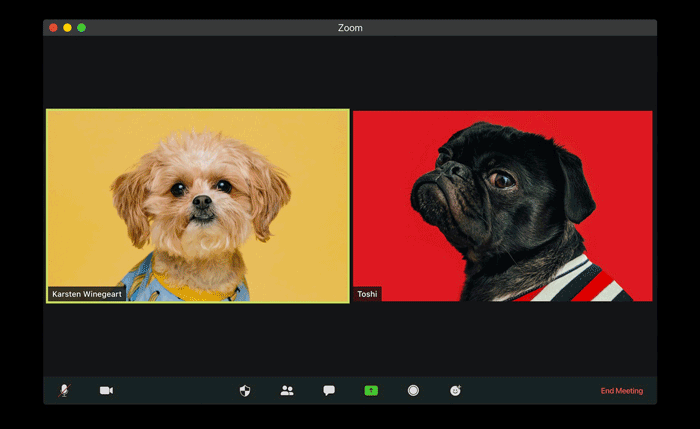Hi, it’s Eddys, with this week’s email newsletter.
I hope you’re having a great week and have gotten a chance to dig into the Impactful Words Guide. If you have any questions after going through it, let me know.
Skill To Learn: The Ability To Identify Elements of Your Winning Ads That Could Be Contributing To Their Success…
Last week we talked about writing Your First 100 (Facebook) Ads.
The short version: How to strategically test a larger quantity of ads overtime so that you can learn what your audience actually responds to…
…instead of spending a lot of time and effort on guessing what they might respond to with one or two ‘quality’ ads that may or may not work in the end.
This week, I’m telling you about what happens after you’ve written your first 100 ads.
Here’s what will happen…
🥴 Some ads will be losers.
They hardly get any reactions, little to no clicks, and zero sales. The cost per click is way too high. If this is your first attempt at writing ads, chances are a large portion of your first 100 ads will be in this category – that’s just how it goes.
🤔 Some ads will be mediocre.
They get some reactions, they get some clicks, they may even get some sales, but you’re consistently losing money on them. Many of your first 100 ads will be in this category.
🤩 Some ads will be good.
This means they get lots of reactions & shares, they get lots of clicks, and they get enough sales to at least breakeven on the front end. Out of your first 100 ads, you may find 15-30 of these as you’ve compounded your learning each week. Some of you may discover these “good ads” in your first few attempts.
Then every now and then, like discovering a white stag on House of the Dragon…
You’ll stumble on…
🤯 1-3 complete “game-changer” ads.
These are ads that have the ability to completely change your business. They get tons of reactions, shares, and comments. They get lots of clicks at a great cost per click and lots of sales at an amazing cost per acquisition (CPA) which means you can usually make a profit on the same day (instead of waiting to breakeven over the next 30, 60, 90 days).
Now what?
The first step is to make the best use of your “good” and “game-changer” ads. Test those same ads on different Facebook audiences and try to get as much juice out of it as possible.
However, there is only so much juice you can get out of ONE orange!
So you’ll begin to experience “ad fatigue” which is just a fancy way of saying that your audience(s) will have seen your ad creative way too many times and will have become blind to it.
Overtime, the Facebook platform will also run out of people who are “likely to convert” so they’ll start to show your ads to less qualified/targeted people and your costs will go up while your results go down.
So what do you do then?
How can you replicate what worked well?
Learn to identify the elements of your “good” and “game-changer” ads that could have contributed to their success…
Here are the main elements I look for…
(There are many more but these are a great starting point).
Emotions/Feelings tapped
While no-one has been able to completely figure out human nature and why people do what they do, it’s widely known that people are heavily influenced by their emotions.
That’s why one of the very first things I look for is what emotions or feelings are being evoked by my good and game-changer ads.
Zoom out of the specific words that are in your ad and ask yourself…
What emotion(s) or feeling(s) do I recognize in this ad?
Positive emotions:
happiness
excitement
calmness
contentment
love
pride
acceptance
Negative emotions
anger
sadness
fear
guilt
shame
regret
grief
embarrassment
hatred
jealousy
There’s a lot more emotions and if you’re interested in going down that rabbit hole, you can see a more comprehensive list of emotions compiled by the Berkeley Well-Being Institute here.
Ad Type
Next, consider what your words accomplished, as a whole.
Did they tell a story?
If so, what type of story…
Inspirational
Metaphor
Parable
Comeback
Underdog
Reluctant hero
Rebirth/reinvention
Adventure/quest
Overcoming against all odds
Did they provide an insight?
What type of insight…
Surface vs Root/underlying problem
Busting a myth or misconception
Contrarian approach to solving the problem
Spotlight on the little known implications of the problem
Showing them an easier, faster, better way out
Removing a barrier they thought they had
Did your ad get straight to the point?
What problem did your ad focus on…
What aspect of the problem did your ad focus on…
What specific situation did your ad talk about?
What benefits did you emphasize?
What barriers did you remove?
Did you reduce or reverse the risk, if so how?
Image Type
Next, analyze your visuals. After all, this is what grabs the attention of your audience as they are scrolling through their feed.
What type of image was it?
Stock/professional photo
Home-made photo taken on your phone
Image of a person? What type of person? Was the person showing emotion or in a specific pose?
Image of your product? What angle? What all was included in the product image?
Drawing
Painting
Watercolor
What colors were used
What do you think made this particular image grab your audience’s attention?
Did you include a text in the image? What text?
Etc.
Overall Structure
Last, but not least…
Look at the overall structure of your ad creatives including your body text and your image.
What combination of elements are present and in what order?
Here’s an example…
Let’s say your Ad #7 was a good or game-changer ad.
Here are some of the elements you might point out (of the different elements we’ve discussed so far)…
- Ad #7 starts with an inspirational story of a customer named Sarah. It’s a story of how Sarah overcame [big monster problem] even when it seemed the odds were NOT in her favor. She experienced fear/frustration at the thought of not ever being able to solve her dilemma. She also felt guilty that she had pretty much given up which had consequences for not just her but her husband as well.
- The ad image is mainly white background and a painting of Sarah with a slightly tearful but smiling/happy expression.
- Ad #7 then transitions into Sarah discovering a contrarian approach to solving the problem that was faster, easier, simpler than she ever thought it could be.
- Sarah is now an advocate for this solution and wants to share her story with other women that are currently in the same or similar position as she was.
- The ad then reveals the solution is inside of [name of product] and that it’s possible to try it risk-free and that many other women like Sarah have tried it and are seeing positive results.
Basically you are, in bullet-form, re-telling the ad and narrating what elements you are seeing and in what order.
You can go as deep & detailed as you want.
I’m only touching the surface here to give you an idea of what could be done but by no means is this a comprehensive dive into all the elements that you could notice in your ads.
Compare & Contrast Your Ads…
Your next breakthrough will come from comparing & contrasting your different ads.
What worked vs what didn’t.
Compare & contrast your losing & mediocre ads vs your good and game-changer ads.
What elements are the same?
What elements are different?
What conclusions can you draw from that?
What worked ok vs what changed the game.
Compare & contrast your good ads vs your game-changer ads.
What elements are the same?
What elements are different?
What conclusions can you draw from that to attempt to recreate their success?
In Conclusion…
Don’t focus on trying to write a “white stag” ad on your first attempt.
Instead…
1 – Use the Your First 100 Ads strategy to start getting data and to come up with your first set of “good” and hopefully “game-changer” ads.
2 – Then analyze your ads to identify the elements that could be contributing to the success of that ad – emotions/feelings, ad types, image types, and overall structure that are present in your losing/mediocre ads vs your good/game-changer ads.
3 – This gives you a structure to follow to attempt replicating/reconstructing the success of your good/game-changer ads (brick by brick) instead of hoping & guessing as to what to write each time you sit down to come up with something “new”.
See you on the next one…
Eddys Velasquez
DigitalMarketingRx
P.S. Did you like this one? If so, then you’ll love our weekly email newsletter. Subscribe for free today to make sure you’re on the list to receive the next one!
P.P.S. While I focused on ads (specifically Facebook ads) for this email newsletter, the same process can be done for sales pages.
If you’d like to see the overall structure of a sales page that has generated over 19,000+ customers and counting from ice cold traffic, you can learn it inside of my other course…
“Sales Page Architect”.
It’s not the only sales page structure that works, but it’s ONE structure I’ve found to work well for me (especially for paid traffic).
And is a good starting point if you’re currently struggling with writing your own sales page that you intend to send paid traffic to.
If you already own the Impactful Words Guide then you’ll also want a good/game-changer sales page to send your traffic to.
.
.
.
Have a comment, question, or just want to share something with me? Leave your comment below…
















